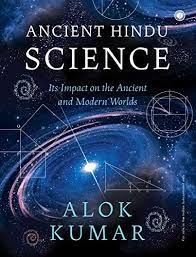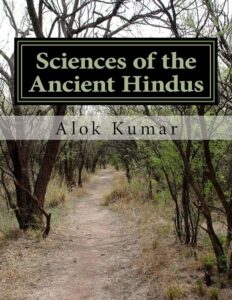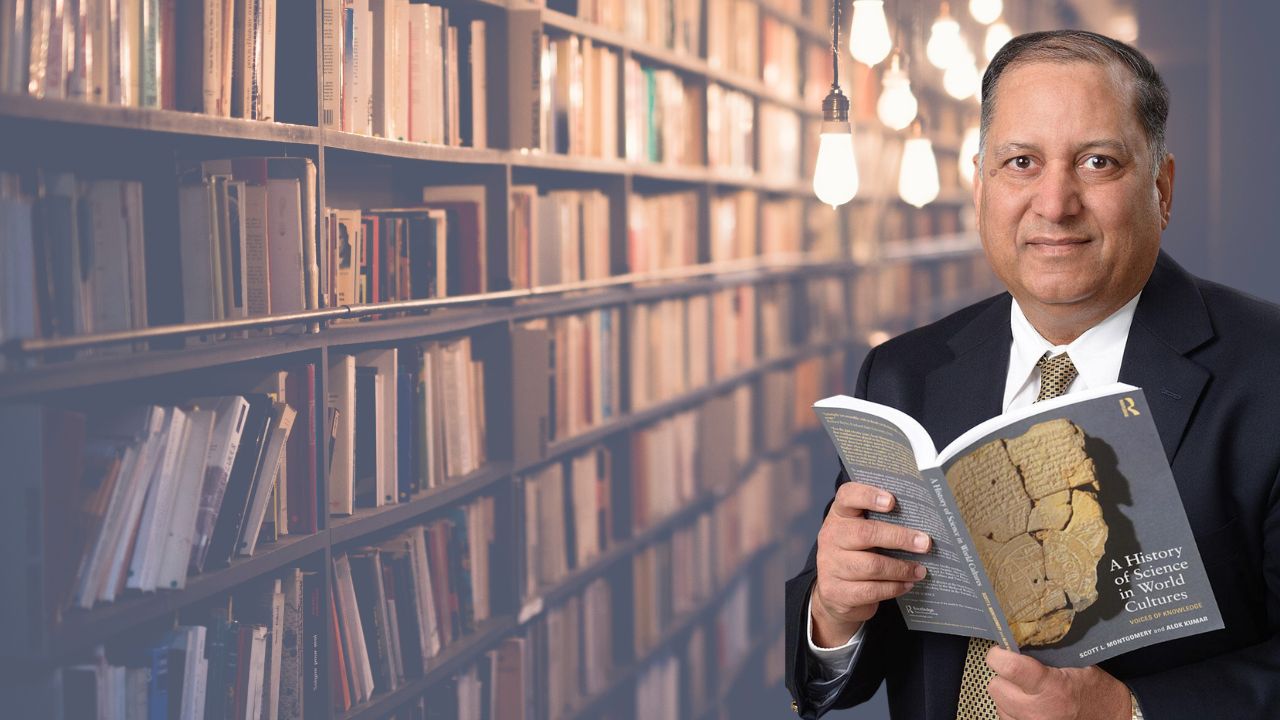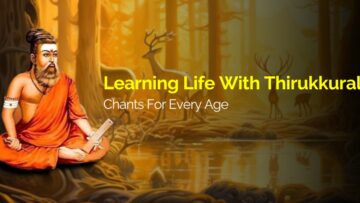Fulbright Specialist Dr Alok Kumar will be spending the next year travelling around India, Sri Lanka, Thailand, Cambodia, and other countries with large Indian migrants (for example, Fiji, Mauritius, South Africa, or Caribbean) to study multiculturalism in the Sciences, especially with a focus on Indian Sciences. Dr Alok believes that while the most powerful nations define their own history and legacy with utmost care, India’s legacy was defined in the ivory towers of the West, creating serious distortions and gaps in our history. His work is an attempt to bring the works of Aryabhata, Kanada, Varahmihir, Brahmgupta, Charaka, and Susruta to mainstream science and be a valuable part of the scientific corpus.
Dr Alok believes the multicultural approach is “to humanize science, to grasp and respect for the ideas and opinions of others. We learn the heritage of ideas, of how we came to think the way we do. Cultures evolve through the process of innovation. By respecting the plurality of ethnic and cultural lifestyles, and permitting them to flourish, cultures may expand the base of alternatives from which they can draw in responding to new conditions and new problems.”
What drew you towards a more multicultural approach to the sciences than the one taught in most schools, that is typically Eurocentric and dismisses anything that is not ‘modern’?
I was raised in a Hindu Brahmin family in Haridwar, Uttarakhand, in Bharat, a holy city recognized for philosophy, religion, mysticism, and Ganga river. As a child, I was made aware of a long and glorified intellectual tradition of the Hindus by my parents. However, I was not aware of some specific examples of this tradition in science. After I started to pursue a career in science, I tried to learn the details of this tradition in my college and university education in Bharat. My education was not of much help to me to learn about my own roots, traditions, and culture. I was taught about Democritus, Archimedes, and Newton, to name a few. However, I did not learn much about Kanada, Aryabhata, Susruta, Caraka, and Brahmgupta. The nearby academic libraries were not useful either since they did not have related books. I wondered why Bharat was known as a golden bird (sone ki Chidya) without much contribution to science and technology. Afterall, science and technology are tools for prosperity for any nation.
After I migrated to America more than four decades ago, I continued with my quest and, eventually, found excellent library facilities where I could read books on Hindu sciences and other related topics. I soon discovered that popular science textbooks do not provide complete accounts and are mostly Eurocentric.
Science evolves out of human necessities. Most civilizations in the past have found material benefits and intellectual satisfaction in attempting to understand the world’s physical and biological phenomena and mysteries. Each civilization may have a distinctive method of recognizing, approaching, and transmitting knowledge in science and technology. This started my journey to study multiculturalism in science and I shared my findings with the academic and public communities. I am pleased to have published four books on related topics. This journey to study multiculturalism in science still continues.
Science is multicultural in nature. Science does not belong to one particular culture or gender; it belongs to all who want to unfold the mysteries of nature. Modern science certainly did not spring into a completely evolved form suddenly with the Renaissance in Europe, as portrayed in many science texts. Influences came from various parts of the world like streams from many different sources join to form a river.
This study also made me aware of why my parents often talked about Bharat’s intellectual traditions and economic prosperity of the past.

In the books you have authored and co-authored, you have covered an astonishing variety of not only cultures from the ancient Hindus to the Arabs, but also the sciences they studied. Is there an area that you are particularly interested in covering in future publications that you haven’t explored yet?
Modern science and medicine would be unrecognizable, and far more primitive, without the immense contribution of the ancient Hindus. They invented everyday essentials such as our base-ten number system, with place-value notations, and zero as a numeral. The ancient Hindus also developed a sophisticated system of medicine with its mind-body approach known as Ayurveda; detailed anatomical and surgical knowledge of the human body, including cataract surgery and the so-called plastic surgery; metallurgical methods of extraction and purification of metals, including the so-called Damascus blade; knowledge of various constellations and planetary motions that was good enough to assign motion to the Earth; and the science of self-improvement popularly known as yoga. I have already covered these topics in my books. However, I am so fortunate to be born in a culture that has contributed so much more to sciences. Therefore, the topics listed above are only the tip of an iceberg, as the phrase goes. The list of topics that I would like to write about is long. Let me share my immediate project. I plan to write about the scientific temper in Hindu society and details of the transmission of Hindu science to the Middle East, China, Cambodia, Indonesia, and Europe.
Great scientists even of the recent age, such as Schrodinger and Einstein, have acknowledged the contributions of ancient Hindu sciences to their work. Even so, do you find a general disregard for the thinking and contribution of other cultures in the Western scientific community? Has this been improving of late?
Yes, fortunately such recognitions of Hindu sciences are slowly improving in academia. The same is true for the scientific contributions of other cultures too.
Albert Einstein, Erwin Schrodinger, Robert Oppenheimer, Ralph Waldo Emerson, Johann Wolfgang von Goethe, Carl Jung, Brian Josephson, and Henry David Thoreau are some western scholars who acknowledged the profoundness of Hindu literature in science, technology, or philosophy. Hindu contributions to these disciplines played an important role in the growth of the West. Wilhelm Halbfass (1940 = 2000), a German Indologist who taught in the University of Pennsylvania, USA, aptly accepted this indebtedness and wrote the following in his popular book, India in Europe: “India has had a significant impact upon the manner in which Europe has articulated, defined, and questioned itself and its fundamental and symptomatic concepts of theory, science and philosophy.”
Let me share about a stumbling block that is hurting Bharat in its global recognition. Most powerful nations define their own history and legacy with utmost care. They attract the best brains and place them in their ivory towers to define the nation’s history and legacy. Universities at Cambridge, Oxford, New York, Paris, Moscow, and Berlin, to name a few, have played this role effectively for their own country. No such effort was ever made in Bharat. In our case, our legacy was defined in the ivory towers of the West. This has created serious distortions and gaps in our history. The works of Aryabhata, Kanada, Varahmihir, Brahmgupta, Charaka, and Susruta are certainly par excellence. Their contributions must be a part of the scientific corpus. However, it is still not the case.

While studying the sciences of so many ancient cultures, have you found common threads running through them? Which if any analogous and parallel developments particularly interest you?
There are so many common threads among ancient cultures that one can easily write a whole book. Let me mention two threads that are interesting to me. First is the transmission of knowledge from one culture to another, setting science as multicultural. Let me explain this issue with examples from Bharat.
We live on a small planet. The planet Earth, the third planet from the Sun, has an equatorial radius of 6378 km and the polar radius of 6357 km. This tells us that we live on a small planet. We can easily go from one place to another on earth’s surface using modern technologies. Even during the ancient period, such travels did happen commonly by determined people. Alexander the Great traveled all the way from Greece to Egypt, Babylon, Persia, and India with his army to capture these lands. When a whole army could travel far distances under hostile conditions of natural obstructions and enemies, a lone philosopher with resources, determination and time at hand could accomplish similar feats. The travels of many Greek philosophers such as Pythagoras, Thales, Plato, Anaxagoras, and Democritus are known to us. What is not popularly known are the travels of Chinese and the Middle Eastern scholars to Bharat for learning. Al-Biruni, Al-Khwarizmi, Ibn Labban, al-Fazari, al-Masudi, and Al-Uqlidisi, Islamic scholars from the Middle East, visited or studied Hindu literature in science and technology while the Chinese scholars, such as Fa-Hien, Hiuen Tsang, and I-tsing, visited Bharat for an extended period for learning. Also, equally unknown are the travels of scholars from Bharat to China and the Middle East for teaching. Kumarajiva (344–413 CE), a monk from Bharat went to China to translate Sanskrit texts into Chinese. Emperor Fu Jian (337–385), the third ruler of the Former Qin Dynasty, asked his general to attack the Kucha (modern Xinjiang region in China) region, where Kumarjiva lived, to bring him to Chang’an, Fu Jian’s capital. This is an example where a war was fought to control a Bhartiya scholar. China provides an example where a nation adopted a foreign religion of Bharat without any atrocity or coercion. Hindus changed the hearts of people by setting examples for them. As a result, China, Japan, and South Korea have a large Buddhist population today.
Let me share about the second common thread. Damascus, Baghdad, Cordoba, and Alexandria were great intellectual centers of the past. They all used multicultural approaches to science and to other areas of learning. Damascus and Baghdad became prominent intellectual centers when they invited Greek, Indian, and Persian scholars. Similarly, Spain became a center of learning from the eighth to the eleventh centuries because it also attracted scholars from all over the world. In modern times, America is greatly enriched from scholars of global origins.
Some of these centers eventually declined when scholars and their works were judged on ill-conceived grounds (race, gender, and culture) rather than on merit. Such declines occurred in the Middle East, Spain, Alexandria, India, Germany and in the Mesoamericas. We must learn a lesson from these failures in history.
What is the key importance of cross-cultural collaboration and discourse in the progress of both science and society?
Some aspects related to this question are covered in my answer to the previous question.
A new free market global economy is becoming a model for most nations, which in turn is causing the globalization of cultures and customs. This is resulting in mass migration of people and a change in the demography of some nations. This brings a multitude of new opportunities to these countries; this brings a multitude of problems too. These problems arise due to their diverse race, culture, and perspectives.
Society in these countries remains fragmented in some cases. People do not learn about each other and do not tolerate differing views. This is somewhat easy to understand if we evaluate our own life. Some of us did not get along with our brothers and sisters as a child. We fought for toys, food, or attention. As adults, some people divorce their spouses when differences erupt. With this mindset, how can I accept a person in our lives who I don’t even know about?
We can coexist in differences when we respect each other. Respect and appreciation of the achievements of others create a much more solid foundation for the stability of a diverse society. The sense of respect and appreciation for others comes from knowing about them, knowing the common elements between them and us, and knowing their relevance to us. We are all so connected with each other in this global economy that isolationism is antithetical. The ancient Hindus knew this when they defined the whole world as one family (Vasudhaiva Kutumbakam). This is often the primary motivation underlying the recent push for the establishment of university courses that have a multicultural component. Afterall, knowledge is the soul of a democracy.
One consequence of the multicultural approach is thus to humanize science, to grasp and respect for the ideas and opinions of others. We learn the heritage of ideas, of how we came to think the way we do. Cultures evolve through the process of innovation. By respecting the plurality of ethnic and cultural lifestyles, and permitting them to flourish, cultures may expand the base of alternatives from which they can draw in responding to new conditions and new problems.
What is one common misconception about ancient sciences in pop culture that you would like to correct?
I am often asked about the relevance of history. Questioners generally see no relevance of history in our modern world. Afterall, in history, we deal with the past that is now gone. There is no reason to cling to our past. Why should I know about ancient sciences or ancient history? These are valid questions and let me share my thoughts on this issue.
Just like a human being needs to have memory to function day to day, a nation needs to know its history. Otherwise, you keep repeating the same mistakes again and again. Can you function effectively with your intellect intact and memory gone? You will keep reinventing a wheel again and again, as the phrase goes. The same is true for a nation. This is the prime reason why most nations put so much effort into defining their histories.
The history of science is not the history of events; it is the history of culture, intents, and a history of human minds. It tells us how we as a culture recognized issues that were crucial to us and resolved them. Such knowledge is important in dealing with the unknown future that is waiting for us. Knowing what we were in the past helps us to understand what we are in the present, and who we will be in the future. If you don’t know your history, then you are like a limb that doesn’t know it is part of a tree.
Further, all countries celebrate their great heroes, including the great scientific and mathematical minds of the past and present. Greece had Aristotle and Socrates, Italy had Galileo and Leonardo Fibonacci, England had Maxell and Newton, France had Laplace and Fourier, and Bharat had Kanada and Aryabhata, showing that the greatest minds of the ancient Hindus could be a match for the world’s best scientists and mathematicians. Just imagine erasing the name of Pythagoras, Aristotle, and Plato from the current Greek philosophy texts because it is an old past and, therefore, irrelevant. Will it be just and fair? The answer is a clear and emphatic “no”. This is exactly the case when we ignore our own heroes in Bharat unjustly.
Could you share how Science in Ancient India was connected through Sanskrit to our other traditions. For instance Astronomy to philosophy, Ayurveda and Yoga.
Let me slightly drift from your question to share an important fact about India before I answer your question. Most early Indologists realized that Sanskrit language was the source of all the spoken dialects of India, as Sir Monier Monier-Williams suggested. Also, they realized that Sanskrit was the “only safe guide to the intricacies and contradictions of Hinduism, the one bond of sympathy, which, like an electric chain, connects Hindus of opposite characters in every district of India,” as Monier-Williams suggested. Many of these foreign experts of Sanskrit had an agenda; they wanted to Christinize and colonize Bharat. They did succeed in one mission and failed in the other. Max Muller, Professor of Comparative Philology and Monier-Williams, Boden Professor of Sanskrit, both at Oxford University, translated Sanskrit texts into English, and used their resources to assist missionaries to Christianize India. Monier-Williams even candidly wrote that the purpose of translation was to aid in “the conversion of the natives of India to the Christian religion.”
The connection between religion and science in Hindu literature is another interesting aspect where the Sanskrit language played an important role. The literature, scientific as well as non-scientific, of the Hindus was compiled in Sanskrit in poetic verses. It was done to assist memorization of texts and some basic features of the Sanskrit language made possible. Therefore, despite the destruction of libraries in the Bhartiya peninsula after the Islamic invasion, their knowledge was salvaged to some extent. The disciplines of astronomy, mathematics, chemistry, physics, yoga, and medicine were all practiced to meet the needs of religion, as well as to fulfill natural curiosity.
I-tsing (also known as Yijing, 635–713), a Chinese traveler who visited India, was impressed when he met people who could recite hundreds of thousands of verses of Vedas. “The Vedas have been handed down from mouth to mouth, not transcribed on paper or leaves. In every generation there exist some intelligent Brahmans who can recite 100,000 verses … This is far from being a myth, for I myself have met such men,” wrote I-tsing.
Devrishi Narada, in Chandogya Upanishad, considered astronomy and mathematics relevant to achieve liberation (Moksa). Aryabhata, in his book Aryabhatiya, considers astronomy, mathematics, physics and other sciences crucial to know about God. Since science was a prescription to moksa, it became imperative for scientists to find true knowledge. Thus, science could grow independently and scientists could investigate whatever they deemed fit.
Why do Aryabhata consider astronomy, mathematics or physics as tools for moksa? This is an interesting question that needs to be investigated.
We can learn about the creator based on our study of the creation. This is the only way out. Thinkers throughout human history observed, experimented, and contemplated about the universe around us—the creation. Investigation of creation is a part of science. Our observance gave us the clue of regularity and harmony of the universe. It is the study of this creation that led us to believe in the creator. Thus, mathematics, astronomy, geometry, physics, and medicine were all considered sacred sciences throughout the ancient and medieval periods in Bharat. No wonder science was bound to prosper in Bharat.
People studied science to understand religion globally. For example, Newton in England, Aryabhata in India, and al-Biruni in the Middle East did just that. In my mind, a religious country naturally must have a large number of scientists and technologists. This, in turn, should lead them to prosperity and power. Since a study of creation is essential to know about the creator, Albert Einstein appropriately wrote the following: “A contemporary has said, not unjustly, that in this materialistic age of ours the serious scientific workers are the only profoundly religious people.”







